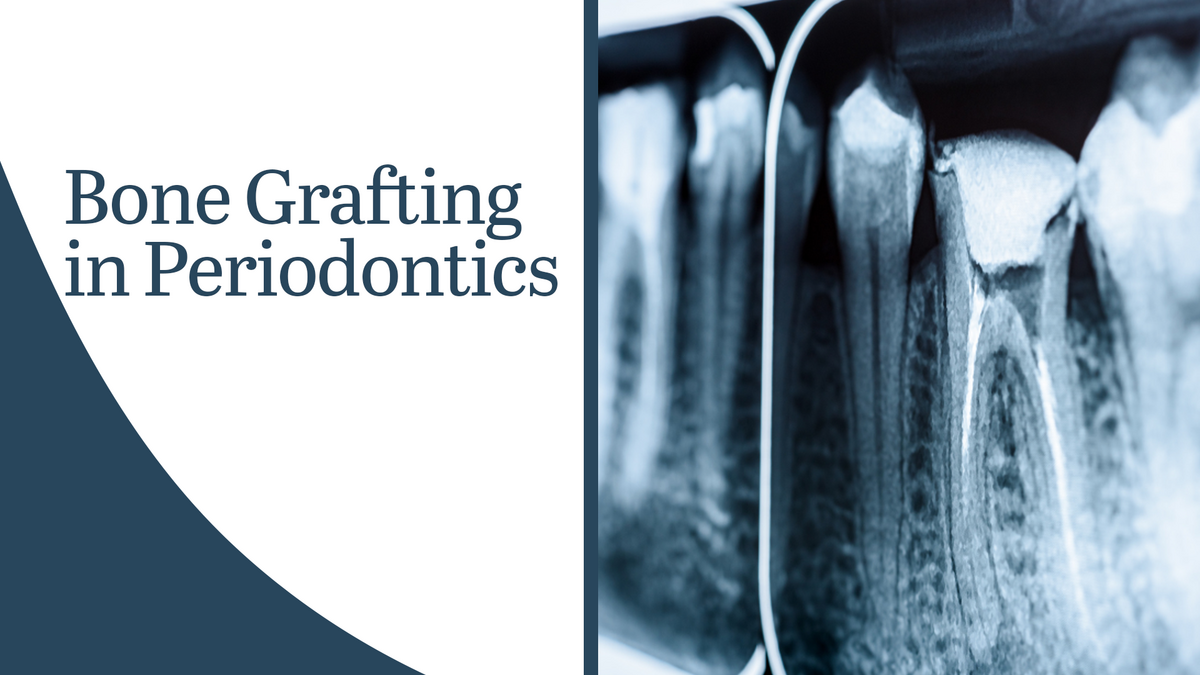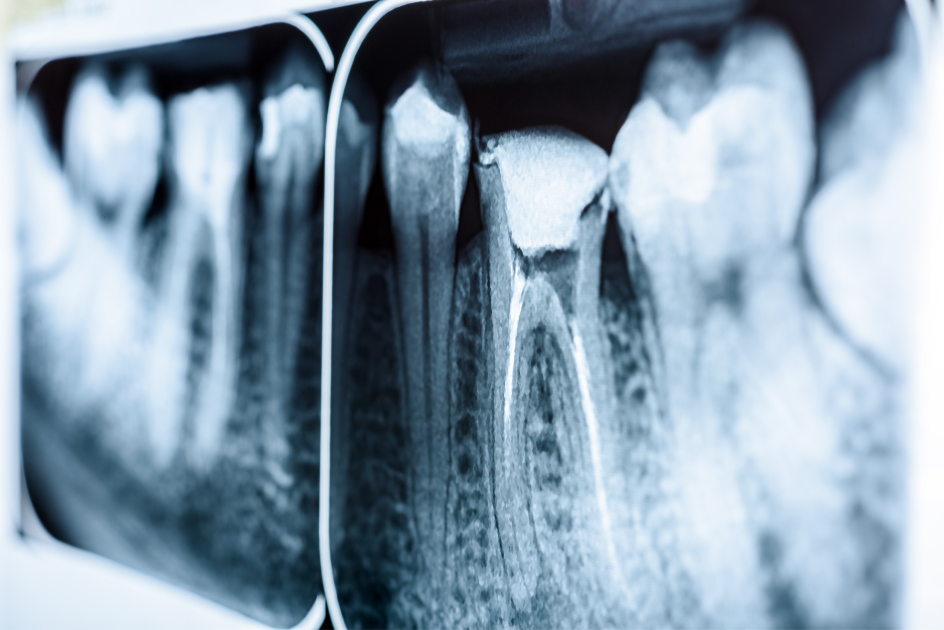Bone Grafting in Periodontics

Bone loss, tooth loss, or other medical ailments can result in patients being ineligible for certain procedures or surgeries. This can be a serious problem, especially in cases where surgical work is necessary.
In these situations, it is sometimes necessary to perform bone grafts to ensure that the patient’s jaw and skull have bones dense and sturdy enough to support necessary dental work.
The term bone grafting can sometimes be intimidating, but if this procedure has been recommended for you, there is nothing to worry about. Bone grafting is an extremely common procedure and is designed to help strengthen the recipient's bones. In the case of periodontics, it strengthens the jawbone to help make dental implants a viable option.
It also can be used to fill in bone levels when surgery has been necessary to correct periodontal disease. It will provide a stronger foundation for the teeth that remain. Once engrafted the new bone may stabilize the teeth for many years.
Still, many patients do not know what to expect from a bone graft procedure and struggle to see why bone grafts may be necessary. For that reason, we have created this quick guide to help those facing the prospect of a bone graft understand the procedure a little bit better.
In this post, we will discuss bone grafting for periodontics, including how bone grafting helps with dental implants, periodontal (gum) disease and how bone grafting can assist with the complications of low sinus cavities. Keep reading to learn more!

What is Bone Grafting in Periodontics and Dentistry?
Bone grafting in periodontics and dentistry is a procedure performed to restore bone that has been lost due to periodontal disease, trauma, or tooth extraction. This technique involves the placement of bone graft material to stimulate new bone growth and provide a stable foundation for dental implants or other restorative procedures.
Whether it's to enhance the aesthetics of a smile or to improve the functionality of the jaw for chewing and speaking, bone grafting plays a critical role in the success of various dental treatments. Understanding the process, types of bone grafts, and the benefits they offer is essential for both dental professionals and patients.
What are dental implants? Learn more here!
In the next section, we will discuss how bone grafting can help with dental implants.
Bone Grafting to Help with Dental Implants
Bone grafting is a surgical procedure that involves transplanting bone tissue or artificial samples onto a patient’s existing bone tissue to repair and rebuild bones that have been damaged or lost. This process is often used with dental implants to provide a solid foundation for the implant to fuse with the existing bone.
Several types of bone grafting materials are used in our office, allografts (bone taken from a cadaver), and alloplasts (synthetic materials).
Different reasons for bone grafts can vary from patient to patient. Some reasons for bone grafting include osteoconduction (providing a scaffold for new bone growth), osteoinduction (stimulating mesenchymal stem cells to differentiate into bone-forming cells), and osteogenesis (formation of new bone by bone-forming cells). These all serve different purposes but the procedure itself will look similar for the patient no matter the reason.
Bone grafting is important in maintaining contour, eliminating dead space, and reducing postoperative infection to enhance bony and soft tissue healing. It helps to ensure that the dental implant has a stable and supportive foundation, promoting successful osseointegration.
Learn more about bone grafting with Bonomo Periodontics here!
Next, let's look at how bone grafting can help improve low-sinus issues in patients.
Low Sinus Cavities and Bone Grafting
Low sinus cavities can significantly impact the success of dental implant surgery. When a patient has a low sinus cavity, there may not be enough bone present to support the placement of an implant post. This can lead to instability and potential failure of the implant.
In cases where the sinus cavity is low, bone grafting is often necessary to create a stable base for the implant. This involves adding bone material to the area to build up the bone and create a suitable foundation for the implant. This process can help ensure the long-term success of the implant by providing the necessary support and stability.
Complications that may arise from low sinus cavities include implant failure, infection, and damage to surrounding structures. It is crucial to address this issue before dental implant surgery to minimize the risk of complications and ensure the best possible outcome.
Bone Grafting with Bonomo Periodontics
Bone grafting is a necessary procedure that can greatly help patients who want dental implants, who have need surgical correction for periodontal disease, or have oral issues caused by low sinus cavities. Bone grafts help repair and reinforce damaged or diseased bone so that a patient can achieve adequate bone structure.
If you are experiencing symptoms of low sinus cavities, like pain behind the eye, toothaches, or tenderness of the face, or have been rejected for dental implants due to poor bone density, then bone grafting may be a solution for you. Also, if you are experiencing periodontal disease symptoms such as bad breath, loss of teeth or bleeding gums you may need help in this area.
Click here to schedule an appointment with Bonomo Periodontics to discuss your viability for bone grafting now!
Bonomo Periodontics on Facebook for more information! Happy with the difference Bonomo Periodontics has made in your life? Leave us a five-star review here!

